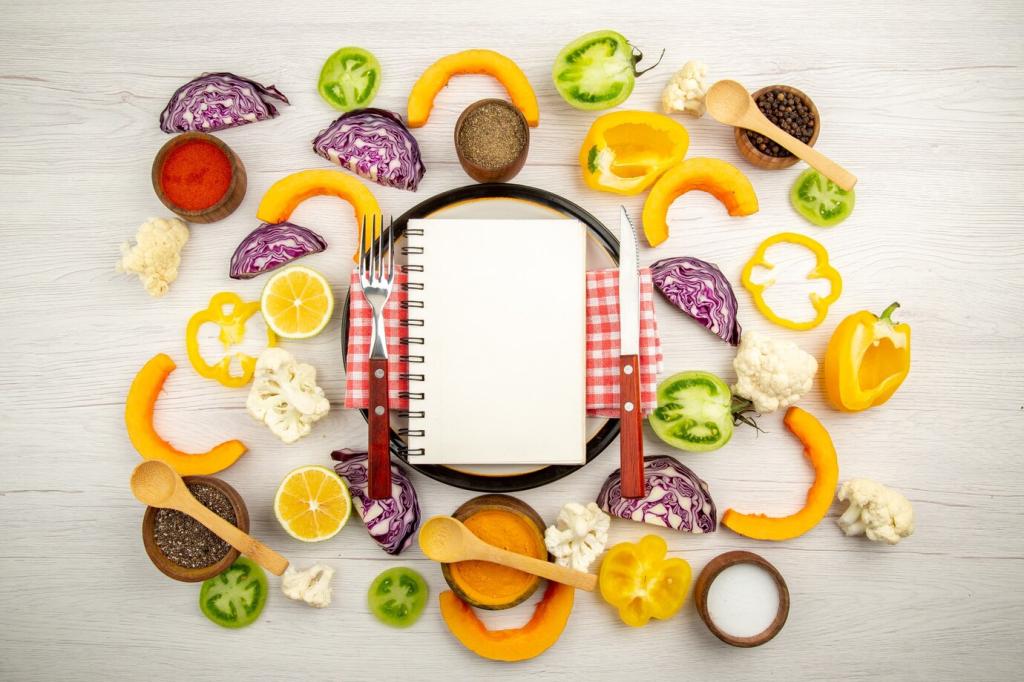
Efficient Meal Planning for Balanced Nutrition: Make Every Plate Count
Chosen theme: Efficient Meal Planning for Balanced Nutrition. Welcome to a practical, upbeat space where weekly menus become effortless, nutritious, and genuinely enjoyable. Stick around for stories, strategies, and actionable steps—and subscribe to get fresh planning templates, quick guides, and community challenges delivered to your inbox.
Build Your Balanced Meal Blueprint
Macronutrients made simple
Think of meals as a three-part harmony: protein for staying power, complex carbs for steady fuel, and colorful produce for fiber and micronutrients. Add healthy fats for satisfaction, and you have a plate that supports focus, recovery, and comfortable fullness all afternoon.
Portion cues you can remember
Use visual cues instead of scales: half a plate vegetables, a palm of protein, a cupped hand of whole grains or starch, and a thumb of healthy fats. These easy references keep portions consistent and flexible across different cuisines and dining settings.
Seasonal anchors for flavor and ease
Let seasons guide your plan: sweet tomatoes and basil in summer, squash and lentils in fall, citrus and hearty greens in winter, and crunchy asparagus in spring. Seasonal anchors simplify shopping lists and make every meal taste naturally vibrant and fresh.
Smart Grocery Strategies That Save Time and Money
Create two lists: staples you replenish automatically and weekly perishables tied to your meals. This approach curbs impulse buys, shortens shopping time, and ensures you always have the building blocks for balanced, satisfying meals ready when you walk through the door.
Smart Grocery Strategies That Save Time and Money
Start with produce, then proteins, then whole grains and dairy, finishing with center-aisle essentials like oats, beans, and spices. This route keeps your focus on nutrient-dense choices, protects your budget, and prevents duplicate purchases hiding behind optimistic intentions.


Prep and Batch Without Losing Freshness
In two focused hours, cook one grain, roast two trays of vegetables, marinate or cook a protein, and blend a versatile sauce. Portion, label, and cool. Suddenly, weeknights become simple assemblies instead of start-from-scratch projects that steal your evening energy.
Adapting Plans to Your Life
Families and picky palates
Use a base-and-toppings strategy: one protein, one grain, loads of vegetables, and a trio of sauces. Kids help choose toppings, adults dial up spices, and everyone gets a balanced plate. Share your family’s favorite toppings in the comments to inspire our community.
Vegetarian and plant-forward weeks
Center meals on beans, lentils, tofu, tempeh, whole grains, nuts, and seeds. Pair iron-rich plant foods with vitamin C sources for better absorption, and rotate herbs generously. Planning ahead ensures protein variety and keeps flavors exciting throughout the entire week.
Active days versus quiet days
On training days, emphasize complex carbohydrates and post-workout protein; on lighter days, increase vegetables and lean proteins for comfortable satiety. Planning these shifts in advance keeps energy steady, reduces cravings, and aligns your meals with your body’s real-time needs.
Keep It Fun: Variety, Creativity, and Community
Pick three breakfasts, three lunches, and three dinners as reliable signatures for the month. Rotate sauces, herbs, and sides to keep flavors fresh. This structure offers built-in variety without overwhelming choices, and it keeps balanced nutrition easy to repeat.
